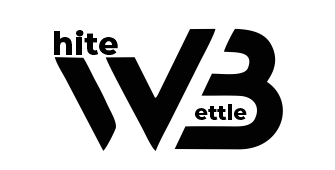Education
TOP 10 BANKING INDUSTRY CHALLENGES AND THEIR SOLUTIONS TO LOOK FOR
Published
2 years agoon

The banking industry is undergoing a radical transformation, like this top 10 banking industry challenges and their solutions fueled by new FinTech competition, shifting business models, increasing regulatory and compliance pressures, and disruptive technologies.
The rise of FinTech/non-bank startups is altering the competitive landscape in financial services, forcing traditional institutions to reconsider their business models. As data breaches become more common and privacy concerns grow, regulatory and compliance requirements tighten. As if that weren’t enough, customer expectations are changing as consumers seek personalized service around the clockThese and other banking industry challenges can be addressed by the same technology that has caused the disruption, but the transition from legacy systems to innovative solutions has not always been easy. Having said that, banks and credit unions must embrace digital transformation if they are to not only survive but thrive in the current environment.
LIST OF10 BANKING INDUSTRY CHALLENGES AND THEIR SOLUTIONS
1. Growing Competition
FinTechs pose a significant threat because they typically target some of the most profitable areas of financial services. According to Goldman Sachs, these startups will account for up to $4.7 trillion in annual revenue diverted from traditional financial services companies.As a result of these new industry entrants, many financial institutions are looking for partnerships and/or acquisition opportunities as a stopgap measure; in fact, Goldman Sachs recently made headlines for heavily investing in FinTech. Traditional banks and credit unions must learn from FinTechs in order to maintain a competitive advantage. FinTechs have achieved success by customer experience that is simplified and intuitive
2. A Cultural Change
Technology has become ingrained in our culture — from artificial intelligence (AI)-enabled wearables that monitor the wearer’s health to smart thermostats that allow you to adjust heating settings from internet-connected devices — and this extends to the banking industry.
Manual processes and systems have no place in the digital world. Banks and credit unions must consider technological solutions to banking industry challenges. As a result, financial institutions must foster an innovative culture in which technology is used to optimize existing processes and procedures for maximum efficiency. This cultural shift toward a technology-first mindset reflects a broader industry acceptance of digital transformation.
3. Regulatory Adherence
As a result of the dramatic increase in regulatory fees relative to earnings and credit losses since the 2008 financial crisis, regulatory compliance has become one of the most significant banking industry challenges. From Basel’s risk-weighted capital requirements to the Dodd-Frank Act, and from the Financial Account Standards Board’s Current Expected Credit Loss (CECL) to the Allowance for Loan and Lease Losses (ALLL), banks and credit unions must comply with an increasing number of regulations; compliance can place significant strain on resources and is frequently dependent on the ability to correlate data from disparate sources.
Basel III Banking Regulations Basel III is a regulatory framework for banks developed by the Basel Committee on Banking Supervision and published in 2009. The risk-weighted capital requirements of Basel III specify the minimum capital adequacy ratio that banks must maintain.
The Dodd-Frank Act
The Dodd-Frank Wall Street Reform and Consumer Protection Act, enacted during the Obama administration, imposed regulations on the financial services industry and established programs to combat predatory lending.
CECL is an accounting standard created by the Financial Accounting Standards Board that requires all institutions that issue credit to estimate expected losses over the remaining life of the loan rather than incurred losses.
ALLL : An ALLL is a reserve set up by financial institutions based on the estimated credit risk in their assets.
Faced with severe penalties for noncompliance, banks have incurred additional cost and risk (without a proportional increase in risk mitigation) in order to stay current on the latest regulatory changes and implement the controls required to meet those requirements. To overcome regulatory compliance challenges, banks and credit unions must foster a compliance culture within the organization and implement formal compliance structures and systems.
Technology is a critical component in establishing this compliance culture. Technology that collects and mines data, performs in-depth data analysis, and generates insightful reporting is particularly useful for identifying and mitigating compliance risk. Furthermore, technology can assist in standardizing processes, ensuring procedures are followed correctly and consistently, and allowing organizations to keep up with new technologies changes in regulatory/industry policy
4. Modifications to Business Models
The cost of compliance management is just one of many banking industry challenges compelling financial institutions to change their business practices. Traditional sources of banking profitability are under pressure due to rising capital costs, low interest rates, declining return on equity, and decreased proprietary trading. Regardless, shareholder expectations remain unchanged.
To maintain profitability, many institutions have created new competitive service offerings, rationalized business lines, and sought long-term improvements in operational efficiencies. Failure to adapt to changing demands is not an option; thus, financial institutions must be designed for agility and be ready to pivot when necessary.
5. Increasing Expectations
The modern consumer is smarter, savvier, and more informed than ever before, and they expect a high level of personalization and convenience from their banking experience. Changing customer demographics play a significant role in these heightened expectations: with each new generation of banking customers comes a deeper understanding of technology and, as a result, a higher expectation of digitized experiences.
Millennials have led the charge toward digitization, with five out of every six reporting that they prefer to interact with brands through social media; when surveyed, millennials also made up the largest percentage of mobile banking users, at 47 percent. Based on this trend, banks can anticipate that future generations, beginning with Generation Z, will be even more invested in omnichannel bankingand technologically savvy Baby Boomers and older members of Generation X, on the other hand, value human interaction and prefer to visit physical branch locations.
This poses a unique challenge for banks and credit unions: how can they satisfy both older and younger generations of banking customers? The solution is a hybrid banking model that combines digital and traditional banking experiences. Consider a physical branch with a self-service station displaying cutting-edge smart devices that customers can use to access their bank’s knowledge base. If a customer requires additional assistance, they can use one of these devices to schedule an appointment with one of the branch’s financial advisors; during the appointment, the advisor will answer any questions the customer has and set them up with a mobile AI assistant that can provide them with additional recommendations based on their preferences.their actions It may sound too good to be true, but the branch of the future exists and is assisting banks and credit unions in meeting and exceeding rising customer expectations.
Investor expectations must also be considered. Annual profits are a major concern — after all, stakeholders want to know that they’ll get a return on their investment or equity, and for that to happen, banks must make a profit. This relates back to customer expectations because, in an increasingly constituent-centric world, satisfied customers are the key to long-term business success — so, the happier your customers, the happier your investors.
6. Retention of Customers
Customers in the financial services industry expect personalized and meaningful experiences delivered via simple and intuitive interfaces on any device, anywhere, and at any time. Although it is difficult to quantify customer experience, customer turnover is measurable, and customer loyalty is quickly becoming an endangered concept. Customer loyalty is the result of strong client relationships that begin with understanding the customer and their expectations and continue with an ongoing client-centric approach.
In a global Accenture Financial Services survey of nearly 33,000 banking customers from 18 markets, 49 percent said that customer service drives loyalty. Financial institutions can optimize interactions that result in increased customer satisfaction and wallet share, as well as a subsequent decrease in customer churn, by knowing the customer and engaging with them accordingly.Bots are one new tool financial organizations can use to deliver superior customer service. Bots are a helpful way to increase customer engagement without incurring additional costs, and studies show that the majority of consumers prefer virtual assistance for timely issue resolution. As the first line of customer interaction, bots can engage customers naturally, conversationally, and contextually, thereby improving resolution time and customer satisfaction. Using sentiment analysis, bots are also able to gather information through dialogue, while understanding context through the recognition of emotional cues. With this information, they can quickly evaluate, escalate, and route complex issues to humans for resolution.
7. Obsolete Mobile App Experiences
Every bank or credit union now has its own branded mobile application; however, just because an organization has a mobile banking strategy does not mean that it is being used to its full potential. To keep customers satisfied, a bank’s mobile experience must be fast, simple to use, fully featured (think live chat, voice-enabled digital assistance, and the like), secure, and regularly updated. Some banks have even begun to reimagine what a banking app can be by introducing mobile payment functionality, which allows customers to use their smartphones as secure digital wallets and instantly transfer money to family and friends.
With a string of high-profile breaches in recent years, security has emerged as a major ch
8. Breach of Security
With a string of high-profile breaches in recent years, security has emerged as a major challenge for the banking industry, as well as a major concern for bank and credit union customers. To keep sensitive customers safe, financial institutions must invest in cutting-edge technology-driven security measures such as:
Address Verification Service (AVS): AVS “compares the billing address submitted by the card user with the cardholder’s billing address on record at the issuing bank” to detect suspicious transactions and prevent fraud.
E2EE (End-to-End Encryption): E2EE “is a secure communication method that prevents third-party access to data while it is being transferred from one end system or device to another.” To encrypt and decrypt private messages, E2EE employs cryptographic keys that are stored at each endpoint. E2EE can be used by banks and credit unions to secure mobile transactions and other online payments, allowing funds to be transferred securely from one account to another or from a customer to a retailer.
Modes:
1
Authentication: Biometric authentication is “a security process that relies on an individual’s unique biological characteristics to verify that he is who he says he is.” Biometric authentication systems compare captured biometric data to stored, verified authentic data in a database.” Voice and facial recognition, as well as iris and fingerprint scanning, are common forms of biometric authentication. Biometric authentication can be used in place of PINs by banks and credit unions because it is more difficult to replicate and thus more secure.
Location-based authentication (also known as geolocation identification) is “a special procedure for proving an individual’s identity and authenticity simply by detecting its presence at a distinct location.” To prevent fraud, banks can use location-based authentication in conjunction with mobile banking Modes:
- Sending a push notification to a customer’s mobile device authorizing a transaction, or triangulating the customer’s location to see if they’re in the same location as the transaction.
- Out-of-band authentication (OOBA) is defined as “a process in which authentication requires two distinct signals from two distinct networks or channels… [By] using two distinct channels, authentication systems can protect against fraudulent users who may only have access to one of these channels.” Banks can use OOBA to generate a one-time security code for their customers, which they receive via automated voice call, SMS text message, or email; the customer then enters that security code to access their account, thereby verifying their identity.
3. RBA, also known as adaptive authentication or step-up authentication, “is a type of risk-based authentication.”a method of applying varying levels of stringency to authentication processes based on the likelihood that access to a given system will compromise it.” RBA enables banks and credit unions to tailor their security measures to each customer transaction’s risk level.
9. Outdated Applications
According to the 2017 Gartner CIO Survey, more than half of financial services CIOs believe that more business will be conducted through digital channels, and that digital initiatives will generate more revenue and value.Organizations that use antiquated business management applications or siloed systems, on the other hand, will be unable to compete in this increasingly digital-first world. Organizations will miss out on critical business evolution if they do not have a solid, forward-thinking technological foundation. In other words, digital transformation is no longer an option; it is a requirement for survival.
While some technologies, such as blockchain, may be too immature to see significant returns from implementation in the near future, others, such as cloud computing, AI, and bots, all offer significant benefits for institutions looking to reduce costs while improving customer satisfaction and growing wallet share.
Cloud computing solutions such as software as a service and platform as a service enable businesses that were previously burdened with disparate legacy systems to simplify and standardize their IT estates. InBanks and credit unions can reduce costs and improve data analytics by leveraging cutting-edge technologies. AI gives financial institutions a significant competitive advantage by providing deep insights into customer behaviors and needs, allowing them to sell the right product to the right customer at the right time. Furthermore, AI can provide critical organizational insights necessary to identify operational opportunities and maintain agility.to survive, but to thrive; innovation is a key differentiator that distinguishes the wheat from the chaff.
Insights drive innovation, and insights are discovered through customer interactions and ongoing organizational analysis. Insights without action, on the other hand, are useless — financial institutions must be ready to pivot when necessary to meet market demands while improving the customer experience.
Financial service organizations that use cutting-edge business technology, particularly cloud applications, have a significant advantage in the digital transformation race: they can innovate more quickly. The agility and scalability of cloud technology are its strengths. Without the constraints of system hardware, cloud technology allows systems to evolve rapidly with your business.
10. How Hitachi Solutions Can Help
With so many banking industry challenges to contend with, charting a clear path forward can seem like an overwhelming task — but with the right team to support your efforts, digital transformation is attainable. The financial services team at Hitachi Solutions has been helping banks and credit unions unlock digital experiences through the power of the Microsoft platform since 2004. With a wide variety of products and services tailored to the financial services industry, such as Engage for Banking and Retail Banking Sales Insights, we’re familiar with the unique issues financial institutions face and have developed the technology to resolve them.
From data science expertise to business intelligence, AI, and beyond, Hitachi Solutions is here to help your organization tackle banking industry challenges and embrace digital transformation.
The Helpful Role of Hitachi Solutions
Charting a clear course forward in the face of the many challenges facing the banking industry can seem like an overwhelming task. However, with the right team at your side, digital transformation is possible. Since 2004, the financial services division of Hitachi Solutions has been assisting banks and credit unions in utilizing the Microsoft platform to its full potential. With a comprehensive range of services and products designed specifically for the financial services sector, like Engage for Banking and Retail Banking Sales Insights, we are knowledgeable about the special problems that financial institutions confront and have created the technology to address them.
Hitachi Solutions can assist your business with banking challenges by providing data science expertise, business intelligence, AI, and more addressing industry issues and embracing digital transformation.
To read more, Click here
Josh The Blogger is a Professional Website Developer, computer Scientist., blogger, SEO/SEM Who is passionate about helping you to achieve making money online, financial goals through education and with powerful tools, and much more















